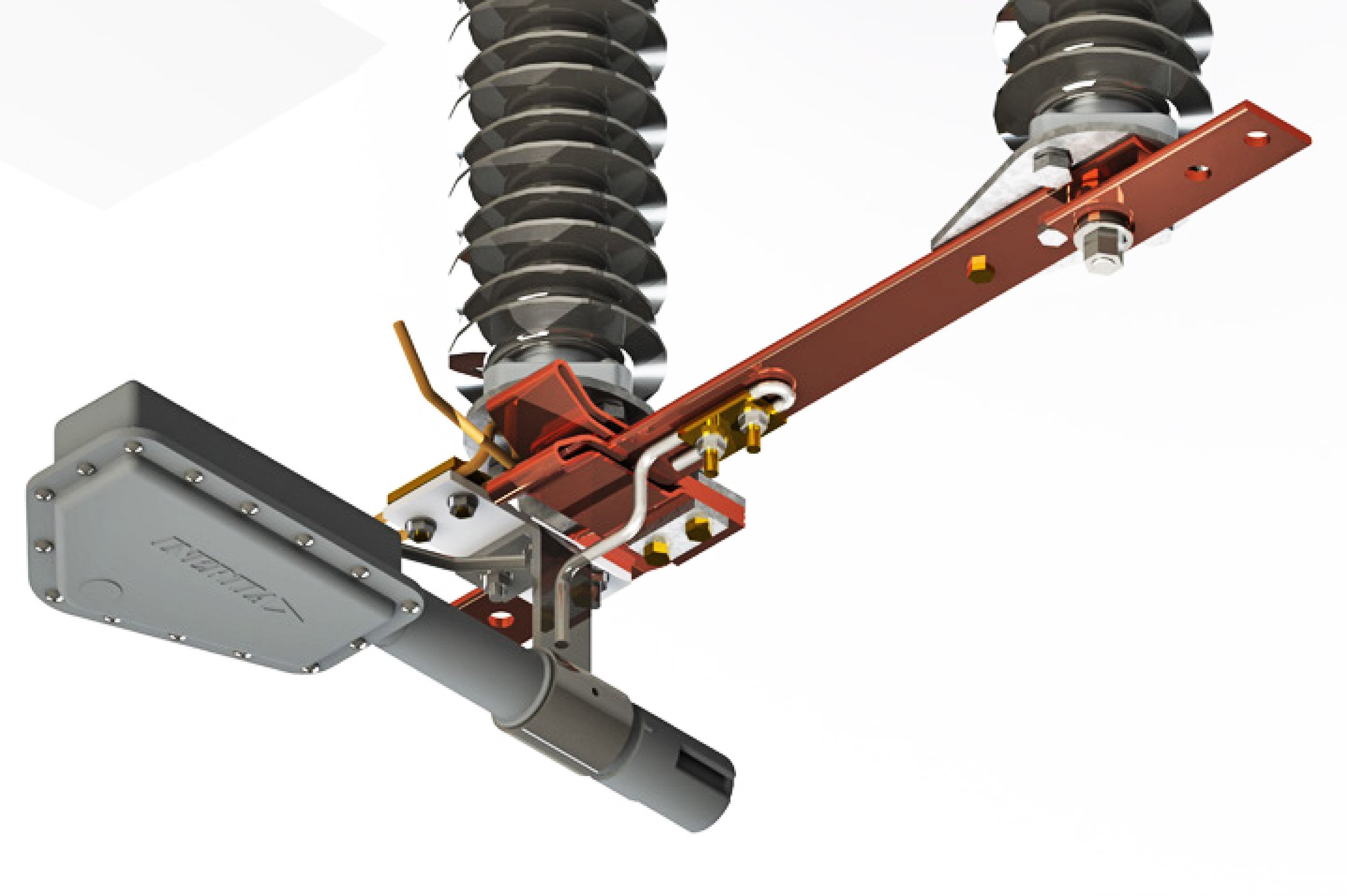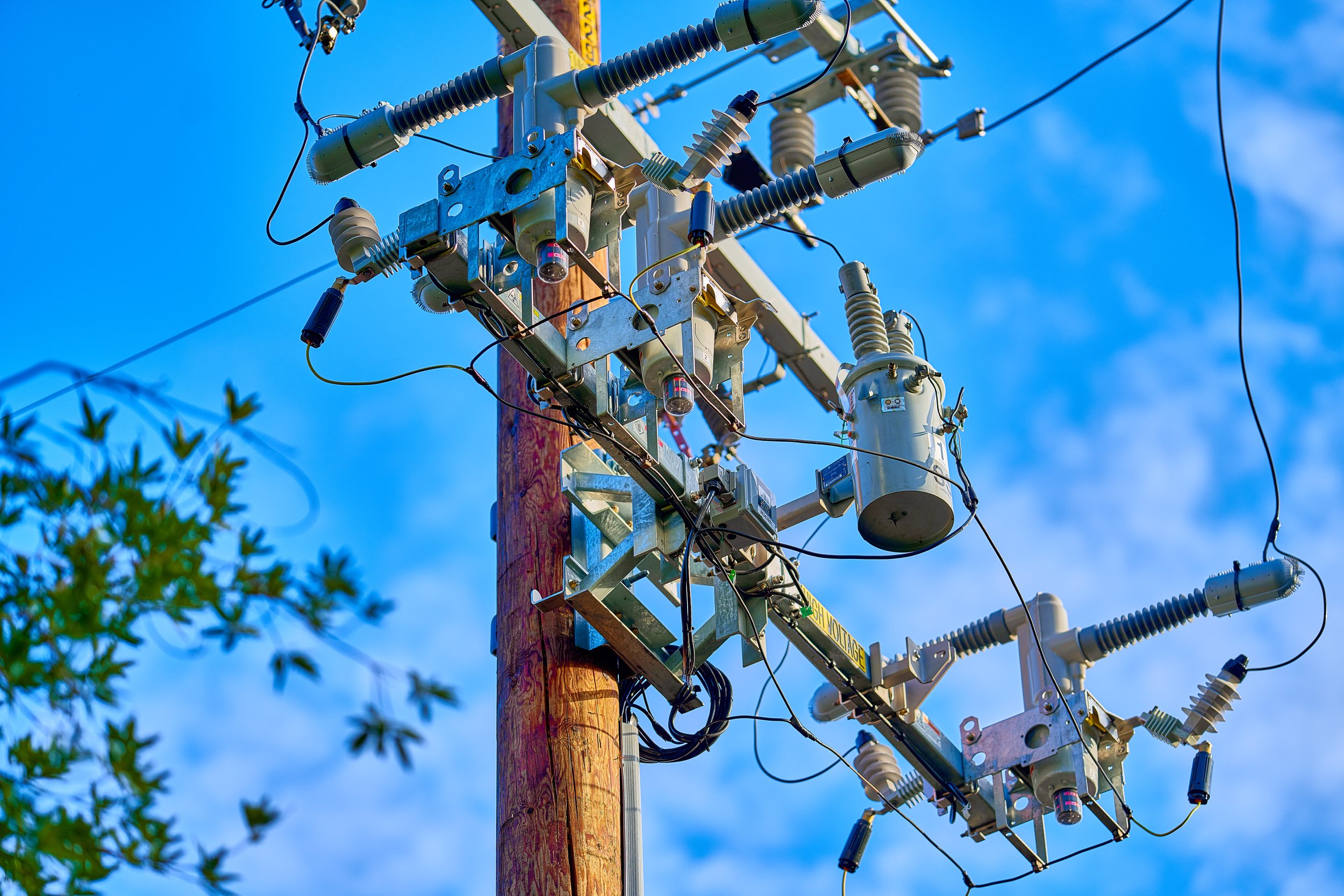Summer 2022
PG&E update
In prior dispatches, The Brionean reported that all of Briones electric power is channeled through two single-use fuses, and that a more sophisticated device called a recloser should take its place. PG&E did that as part of a larger distribution update. A recloser was installed about a mile upstream of the old circuit breakers as shown in the annotated Google Earth image below. The old circuit breaker was replaced with a manually operated switch. Additionally, new circuit breaker holders were installed at the old circuit breaker location, but were not wired in. [See further update below.]
The new switch is shown in the gallery below, a LineBOSS manually-operated switch made in Stockton, CA. The dark wedgie thing is an an AmpRupter which extinguishes the arc that happens during opening. This is the first pole in which only two of three phases are present. Apparently Briones is not mature enough to responsibly enjoy three-phase power. [See further update below.]








Pictured below is the new recloser, a Kyle model NOVA 27 three-phase, microprocessor-controlled vacuum-interrupting breaker made by Eaton Power System’s Cooper Power. The rectangular box contains the mechanical linkages, while the three ribbed appendages atop contain the actual switch contacts in an evacuated atmosphere. The controller (known as a “relay” in power engineering) is in the box much farther down the pole. The LineBOSS switch at the top of the pole provides a bypass of the recloser for use during servicing. This recloser serves 408 meters which is roughly double the number for just the Briones portion. Reclosers are normally set to automatically reclose in a fraction of a second, and if that still faults further reclosings are attempted before locking out and requiring manual intervention. This is because most faults disappear quickly, such as vegetation that falls off the line after causing a fault. But during wildfire season, PG&E sets them to non-reclosing. If it faults, a crew is sent out to “patrol” the system, meaning driving around looking for something amiss, before closing in. You can tell whether the recloser is open or closed by looking at the indicator on the bottom, shown in the last photo. Red is closed, and green is open.




A Small Fire Next to Railroad
Firefighting is hard, dirty work, even in the case of small fires like this one. Mechanization, though, can be a huge force multiplier. In this case, the efforts of nine battle-hardened wildland firefighters is dwarfed by one person with a foamed-water hose. The hand crew is working to create a defensive fireline which is a fuel break intended to stop the spread. In the quasi-military lexicon of firefighting, construction of a fireline is a defensive tactic. An offensive tactic is shown in the next photo showing an attack hoseline charged with water augmented with a Class A foam additive. (Class A foam is NOT the notorious AFFF which is the old Class B foam for liquid-fuelled fires such as those at refineries or crash sites. Now mostly phased out, AFFF generated environmental and human toxicological concerns.) Class A foam is as harmless as dish soap.







Dedicated Recloser Installed at Prior Fuse Pole
Those unused fuses turned out to be a work in progress. The photos below show the new recloser system, a Viper-ST made by G&W Electric of Illinois. The observant viewer will notice one thing odd. This is a three-phase recloser, but Briones is served by only single-phase power, and this recloseer is offered in single-phase configurations. So why the third phase?









